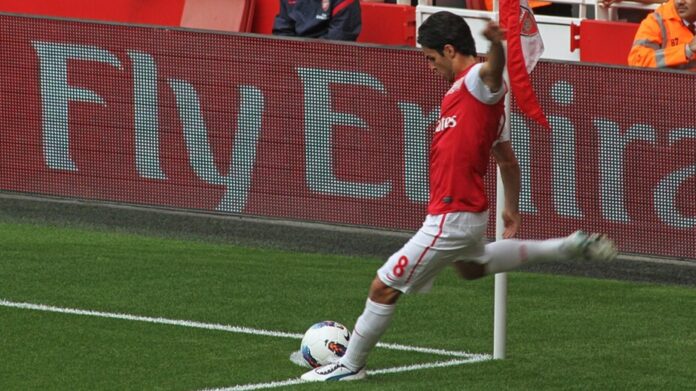The new era of football
There was a time when one head coach and his assistant carried the entire weight of a club. From training sessions to tactical analysis, from player development to match preparation, everything rested on two shoulders.
Today the game has changed. We now have zone marking coaches, counterattack analysts, offside line coordinators and set piece specialists. As football has become more complex, the structure of coaching has become more specialized.
In the past, one or two scouts were enough to run a recruitment department. Now every age category has its own scouting team. It is not only about more people, but about a deeper football intelligence.
Clubs that still rely on individual decisions rather than a collective system are falling behind. Modern football is no longer about intuition; it is about structure and synchronization. Those who integrate technology, data and new training methods are the ones creating real difference.
Even private trainers are now experts in specific muscle groups or injury types. Detail knowledge has become more valuable than general knowledge.
Resource management and sustainable growth
Many clubs still spend their resources on expensive transfers. But true growth begins with a well-structured foundation. A team that is not planned properly can only buy time, not success.
Star coaches and star players can create excitement for a moment, but without a long-term plan they often leave behind nothing but financial debt. History is full of examples proving that success belongs to those who plan, not to those who improvise.
Thomas Frank and Bernardo Cueva – the minds behind the model
Brentford’s success was never a miracle. It was a methodology. Thomas Frank was an obsessive leader who lived for details. Bernardo Cueva was the analytical mind who turned data into intuition. Together they created modern football’s new weapon: the engineered set piece.
During the 2022–23 season, Brentford scored 22 goals from set pieces. Those numbers were not a coincidence but the reflection of a philosophy. Every corner, every free kick, every throw-in was treated like a project. It was planned, tested and analyzed.
Many clubs try to copy Brentford’s statistics, but few understand the thinking behind them. Because success is not a tactic. It is a mindset. And in Brentford, that mindset lived in two people: Thomas Frank and Bernardo Cueva.
They were the locksmiths of the new football era. They used engineering instead of intuition to unlock defenses.
“They were the locksmiths of the new football era. They used engineering instead of intuition to unlock defenses.”
The European revolution – the rise of set piece culture
The silent revolution of football began in Europe. Led by Brentford, many clubs embraced the idea that the ball being still does not mean the game has stopped.
- Arsenal (England): Mikel Arteta brought Nicolas Jover from Manchester City to make set pieces a core part of Arsenal’s identity. Between 2021 and 2023, Arsenal doubled their goals from dead ball situations. As Arteta said, “We do not train corners. We train decisions.”
- FC Midtjylland (Denmark): Champions in 2014–15 after scoring 25 set piece goals. They were the first club to build a data-driven set piece system using Opta analytics.
- Liverpool (England): With Thomas Grønnemark, the club introduced the idea of a throw-in coach and turned even restarts into tactical weapons.
- AZ Alkmaar (Netherlands): One of the first academies to apply set piece programs at every age level.
These teams share a common belief: that the game can be rebuilt every time the ball stops.
“The ball being still does not mean the game has stopped.”
The American potential – the next step for MLS
Most MLS clubs have yet to fully embrace this revolution. For many, a set piece coach is still considered optional. But the numbers tell a different story. Ten additional goals from set pieces can mean a difference of twenty points over a season. That is often the gap between playoffs and relegation.
The next evolution of American soccer will come from the clubs that invest in this area. A good set piece coach does not only design plays; he can design a club’s destiny.
From luck to identity – the discipline of repetition
Team sessions are not enough to master set pieces and dead balls. At least three designated players must work individually and consistently.
You can admire a free kick or a perfectly executed corner and call it brilliant. The first time it is luck. The second time it is coincidence. When you do it every week, it becomes your identity.
This consistency requires repetition without compromise. Because while you are training to execute them, your opponents are training to defend them. Football is one of the most interactive professions in the world. You must always be ready to surprise your rival and captivate your audience.
Roughly thirty percent of all goals come from set pieces. Putting extra effort into that thirty percent of the game can change the entire direction of a season. Sometimes those thirty goals mean ten extra points. Sometimes forty. And often, that is the difference between failure and success.
The new identity of a coach
The modern coach is no longer just a game manager. He is a designer of moments. Set piece and dead ball trainings define this new generation of coaches.
The modern coach is a locksmith. He finds solutions when the game is frozen. He turns luck into design.
“We do not look for luck. We design it.”

